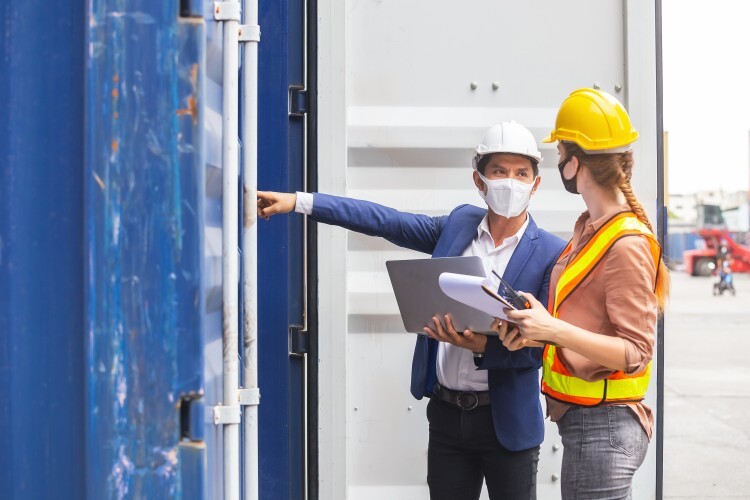General information on safety and work
Primary stages
of organization of construction works
Having determined the construction zone, the owner must carry out a set of preparatory work.
A contractor is an enterprise that, under a construction contract, undertakes to build and commission an object on time or perform other construction work in accordance with the design and estimate documentation. The customer undertakes to provide the contractor with a construction site and transfer the approved design and estimate documentation, if this obligation is not assigned to the contractor, accept the facility or completed construction work and pay for them.
A general contractor is a contractor who engages third parties (subcontractors) to perform work, while remaining responsible to the customer for the results of their work.
Works of increased danger carried out on the basis of a permit are, in particular, classified by the Appendix as installation, dismantling and major repairs of buildings and structures, as well as restoration and strengthening of their emergency parts.
When performing work at construction sites by several organizations, the general contractor must determine one of the contractors responsible for labor protection at the facility, which is obliged to:
- carry out admission to the performance of work only subcontractors (contractors) who have permission to perform work of increased danger;
- together with subcontractors (contractors) who are involved in the performance of work, develop a schedule for the implementation of joint work, measures for the safe performance of work;
- before starting work, determine the danger zones at the construction site;
- coordinate the compliance of contractors with labor protection requirements and monitor compliance by employees of subcontracting organizations with decisions on labor protection issues;
- make it impossible for unauthorized persons to enter the construction site and ensure the registration of all persons entering or leaving the construction site.
In case of simultaneous performance of work by the general contractor and subcontractors, ensuring the implementation of general labor protection measures is the responsibility of the general contractor.
In addition, before starting work on the territory of an enterprise or workshop, the customer (enterprise) and the general contractor with the participation of subcontracting (contracting) organizations are required to draw up an admission certificate.
The enterprise responsible for compliance with labor protection requirements must also mark the hazardous areas on the site with informative signs.
Dangerous areas include areas:
- near uninsulated conductive parts of electrical installations;
- near unprotected drops in height of 1.3 m or more;
- where the maximum permissible concentrations of harmful substances in the air can be exceeded.
Admission to the construction site of unauthorized persons or workers who are not employed at work in this territory, as well as persons in a state of alcoholic, toxic or drug intoxication, is prohibited.
Before starting work in places where hazardous production factors operate or may arise, the responsible work foreman must issue a work permit for the performance of work of increased danger.

Coordination of measures to ensure labor safety
The minimum requirements establish a rule according to which, if two or more contractors or a contractor and an individual, or individuals, the customer or construction manager appoints one or more coordinators for labor protection issues at the stage of development of project documentation for construction and coordinators on labor protection issues at the construction stage.
Requirements for the use of technical equipment
Construction equipment must comply with the norms of regulatory acts and there must be technical documentation for it. Besides:
- it is impossible to use machines and equipment without partitions, interlocks, signaling systems and other safety devices provided for by their design;
- at the workplace, ready-made sets of serviceable tools, inventory, lifting systems and fire extinguishing equipment should be located;
- working equipment is subject to inspection before the start of the shift, and also requires periodic inspection at least once every 10 days;
- installation of equipment at the facility should be carried out in accordance with the master plan of the project for the production of works;
- when placing equipment on the territory of the facility, its sudden overturning or unauthorized movement under the influence of wind should be excluded.
- workers with the appropriate qualifications and who have successfully passed the test of knowledge on labor safety are allowed to manage and maintain construction equipment.

Site security
Contractors must familiarize themselves with the internal fire prevention instructions before starting work. In addition, they are given ongoing briefing before work shifts.
Depending on the size and characteristics of the facility, the employer must purchase and install a sufficient number of fire fighting equipment (fire extinguishers, hydrants, sand containers, etc.) at the facility.
Storage locations for firefighting tools and approaches to them should be noted on the general site plan.
Flammable substances must be stored in a closed container in a safe place.
Smoking is prohibited near places where flammable or combustible substances are stored, and the use of open flame sources is allowed only at a distance of more than 50 meters from the specified materials.
Before starting work in premises where there is a risk of release of harmful gases, an air condition assessment should be carried out.
If the concentration of dangerous gases is detected, work must be stopped to ventilate workplaces and provide workers with appropriate protective equipment.
Remember that labor protection on the construction site must be properly organized. Failure by the contractor (subcontractor) to take measures related to labor safety may be the basis for the application of sanctions provided for in the terms of the relevant contract and legal regulations.
